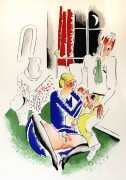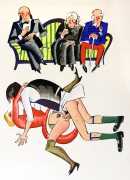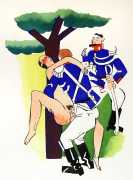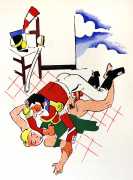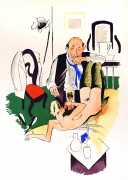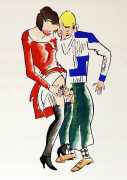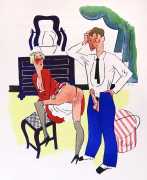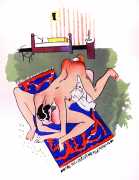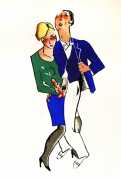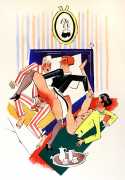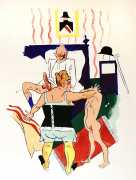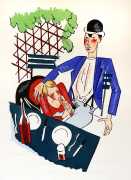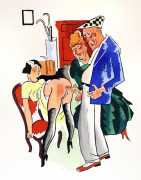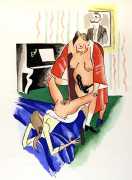 Like the rest of Pierre Louÿs’ voluminous output of erotica, Pibrac (sometimes spelt Pybrac) was not published during his lifetime, but instead figured among the many secret manuscripts discovered after his death, tucked and filed away, and subsequently auctioned off and scattered among collectors. It would see its first clandestine publication in 1927, two years after the author’s death, so this Stobbaerts-illustrated edition, with a selection of the verses, came very soon after any awareness that they existed.
Like the rest of Pierre Louÿs’ voluminous output of erotica, Pibrac (sometimes spelt Pybrac) was not published during his lifetime, but instead figured among the many secret manuscripts discovered after his death, tucked and filed away, and subsequently auctioned off and scattered among collectors. It would see its first clandestine publication in 1927, two years after the author’s death, so this Stobbaerts-illustrated edition, with a selection of the verses, came very soon after any awareness that they existed.
The title is derived from the name of Guy Du Faur, Seigneur de Pibrac, French jurist, poet, and chancellor to Marguerite of France, Queen of Navarre, who notoriously rejected his attempts at wooing her. That fact, combined with Pibrac’s reportedly upright character (Montaigne said of him, on his death: ‘Good Monsieur de Pibrac, whom we have just lost, such a noble mind, such sound opinions, such a gentle character!’), undoubtedly contributed to Louÿs’ decision to employ a deformation of his name as the title to this collection. The mockery extends to the format and tenor of the poems, though, as Pibrac is best remembered for his own collection of poems, a set of 126 moralistic quatrains, which throughout its endless printings bestowed good advice and guidelines to proper conduct upon many generations of French youth up until the nineteenth century. For the full background to Louÿs’ scandalous reinterpretation of Pibrac’s verse form, the introduction to Geoffrey Longnecker’s English translation can be found here.

The twenty bright and colourful Stobbaerts illustrations are pure art deco with clear cubist influences, their tongue-in-cheek quality perfectly complementing Louÿs’ ribald verses. They appear to have been produced using stencils, with a small amount of hand-colouring added. They are certainly ‘very free’ (‘très libre’) as the French would say, among the most explicit depictions of sex of the period. It is interesting to see them alongside one of Stobbaert’s watercolour sketches, La partie de cartes (The Card Party) of 1925; he clearly had an interest in the social activities of the period as well as the artistic ones.
The Stobbaerts-illustrated portfolio of Pibrac was privately published in a limited numbered edition of 250 copies. Twelve of the twenty illustrations were reproduced in poorer quality in a 1933 reprint by Paris publisher Marcel Seheur, and again in the 1940s.




